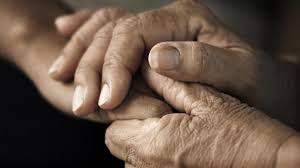Ageing
5. End of life
5.3. Access to palliative care (1a-c)
Access to palliative care and equal right to holistic care is valued as a human right. All people have the right to receive high-quality care during advanced illness and to a dignified death, free from pain and in accordance with their spiritual and religious needs (1:32-35).
Most palliative care needs of people with ID are not different from those of the general population. But there are some additional challenges (1:15-16):
- Communication difficulties affect all aspects of palliative care provision
- People with ID often have difficulty in communicating physical problems, making it more difficult to recognise illness and treat symptoms
- People with ID may have less insight into their illness and treatment and find it more difficult to understand the consequences of their situation
- The presence of ID may affect the person’s insight into his or her own mortality
- Some people with ID have limitations in their mental capacity, affecting their ability to participate in decision-making
- Signs and symptoms of ageing can occur at a younger age
- Many people with ID have co-morbidities and use a range of medications (multi-pharmacy), making palliative care assessment and treatment more difficult
- When family relationships end (for example, when elderly parents die), they are less likely to be replaced by new relationships
- The social circumstances of many people with ID make the delivery of palliative care (and any decision-making processes) more complex; for example, there may be care staff involved as well as families
- There are higher levels of behavioural or psychiatric problems among the population of people with ID
There is consistent evidence that people with ID have poor access to palliative care services in comparison to the rest of the population. Some have many special health and social care needs that are necessary to address, and they often face barriers in relation to accessing services.
Most people with ID are less able to understand the importance of health screenings, to recognise the signs and symptoms of ill health, or to draw this to the attention of others.
The knowledge, beliefs and attitudes of clinicians and carers can create barriers to accessing services. This may be due to lack of training, causing professionals to attribute changed or unusual behavioural patterns to the ID itself, rather than due to discomfort or illness that would need to be explored and treated. The latter has been described as ‘diagnostic overshadowing’.
There is a myth and barrier about hospice and palliative care services being only about death and dying and the last days of life, rather than their more positive role of helping people to cope, adapt and live fully what is left of life, following the diagnosis of an advanced disease.
To enable palliative care to be delivered to people with ID in a meaningful and accessible way, health and social care professionals are required to recognise this population’s additional needs. Reasonable adjustments could include, for example:
- Giving information that is accessible and tailored to the person’s communication needs
- Giving people more time
- Listening to, and involving family and other carers
- Providing training for staff about the needs of people with ID who require palliative care
